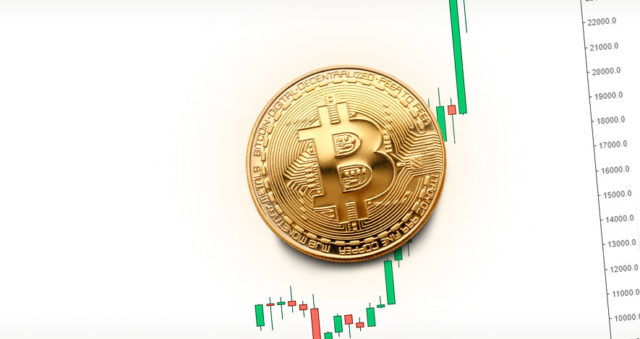- The US dollar appreciates, partly erasing Tuesday’s losses.
- US Factory Orders and FOMC Minutes will be released this Wednesday.
- The Dollar Index is back above 103.00, although the markets show nervous reactions.
The US dollar returned after the brief pause on Tuesday due to the US national holiday. Markets are once again focused on the two key items for this week, which are the US jobs report on Friday and the Minutes of the Federal Open Market Committee (FOMC) that will be published at 18:00 GMT this Wednesday. Traders will look for clues as to the number of rate hikes expected, and especially the longevity of the pivot level the Fed will want to hold before starting to cut rates.. Any prospect of a rate cut will translate into a weakening US dollar, as the currency’s interest rate value will start to decline against its peers, likely leading to gains in US stocks.
Other data to watch this Wednesday are factory orders and the IBD/TIPP economic optimism index, both at 14:00 GMT. Figures for crude oil reserves from the US Energy Information Administration (EIA) have been brought forward to Thursday. At 18:00 GMT the minutes of the Federal Open Market Committee (FOMC) will be published and at 20:30 GMT the oil reserves of the American Petroleum Institute (API) will be released.
Daily Summary: US Dollar Has Much Work Ahead to Erase Tuesday’s Losses
- US Factory Orders will be released at 14:00 GMT and are expected to rise from 0.4% previously to 0.8% in May.
- John C. Williams, the President of the Federal Reserve Bank of New York, will make an appearance around 20:00 GMT and may make additional comments to guide markets on the FOMC minutes.
- For its part, the US dollar is trading lower against the Euro, as Purchasing Managers’ Index (PMI) figures fell below 50 in France and Italy. Thus, both Europe and the US recorded contractions in their PMIs. At the same time, the European Central Bank (ECB) published a survey on inflation expectations, which have been revised downwards. This adds to the evidence of easing inflationary pressures, making it more likely that the ECB will end its hike cycle sooner than markets anticipate.
- In China, the Caixin Purchasing Managers’ Index (PMI) for June fell compared to the previous month, triggering a sell-off in Chinese stocks and a weakening Yuan.
- Asian markets mostly in the red, with Japan’s Topix closing nearly unchanged and China’s Hang Seng losing 1.57%. US equity futures are trading slightly higher and are likely to remain subdued until investors learn of the Federal Open Market Committee minutes.
- CME Group’s FedWatch tool shows that markets are pricing in an 88.2% chance of a 25 basis point (bp) rate hike on July 26. The dislocation between market expectations and what the Fed has been communicating in terms of the number of rate hikes remains persistent and could lead to a stronger US dollar once markets get to the point of realizing it. The FOMC minutes could trigger an increase in the possibility of a second hike in some longer-term futures.
- The 10-year US Treasury yield traded as high as 3.84% on Wednesday, after being closed all day Tuesday.
- There is no clear direction to go towards the middle of the European session.
Dollar Index Technical Analysis: Dollar Struggling to Move Away from 103.00
The US dollar is painting a totally different picture compared to its performance on Tuesday when it weakened against most major currencies. On Wednesday, almost all segments are in the green with the Canadian Dollar (USD/CAD) and Indian Rupee (USD/INR) at a high for the month. The Dollar Index is back to where it was on Monday, around 103.00, and future direction will depend on market sentiment on the FOMC Minutes.
Upward, 103.54 is expected to be the next key resistance level, in line with the maximum of last week. The 200-day SMA at 104.83 is still quite a way off. Therefore, the intermediate level to watch is the psychological level of 104.00 and the May 31 high at 104.70.
Downward, the 55-day SMA near 102.76 has proven its importance, as it clearly underpinned price action on Friday and Monday, triggering a trend reversal after the US dollar’s steady weakening. Should the DXY slide below 102.50, expect further weakness with a full slide to 102.00 and a retest of the June low at 101.92.
Frequently asked questions about the US dollar
What is the US dollar?
The US dollar (USD) is the official currency of the United States of America and the “de facto” currency of many other countries where it circulates alongside local banknotes. According to 2022 data, it is the most traded currency in the world, with more than 88% of all global foreign exchange operations, which is equivalent to an average of 6.6 trillion dollars in daily transactions.
After World War II, the USD took over from the British Pound as the world’s reserve currency. For most of its history, the US dollar was backed by gold, until the Bretton Woods Agreement of 1971, when the gold standard disappeared.
How do the decisions of the Federal Reserve affect the dollar?
The single most important factor influencing the value of the US dollar is monetary policy, which is determined by the Federal Reserve (Fed). The Fed has two mandates: achieve price stability (control inflation) and promote full employment. Its main tool to achieve these two objectives is to adjust interest rates.
When prices rise too fast and inflation exceeds the Fed’s 2% target, the Fed raises rates, which favors the dollar’s value. When inflation falls below 2% or the unemployment rate is too high, the Fed can lower interest rates, which weighs on the dollar.
What is Quantitative Easing and how does it influence the Dollar?
In extreme situations, the Federal Reserve may also print more dollars and enact quantitative easing (QE). QE is the process by which the Fed substantially increases the flow of credit into a stuck financial system.
This is an unconventional policy measure that is used when credit has dried up because banks do not lend to each other (for fear of counterparty default). It is the last resort when a simple lowering of interest rates is unlikely to achieve the necessary result. It was the weapon of choice for the Fed to combat the credit crunch that occurred during the Great Financial Crisis of 2008. It consists of the Fed printing more dollars and using them to buy US government bonds, mainly from financial institutions. QE usually leads to a weakening of the US dollar.
What is quantitative tightening and how does it influence the US dollar?
Quantitative tightening (QT) is the reverse process by which the Federal Reserve stops buying bonds from financial institutions and does not reinvest the principal of the bonds it has in its portfolio in new purchases. It is usually positive for the US dollar.
Source: Fx Street
I am Joshua Winder, a senior-level journalist and editor at World Stock Market. I specialize in covering news related to the stock market and economic trends. With more than 8 years of experience in this field, I have become an expert in financial reporting.







